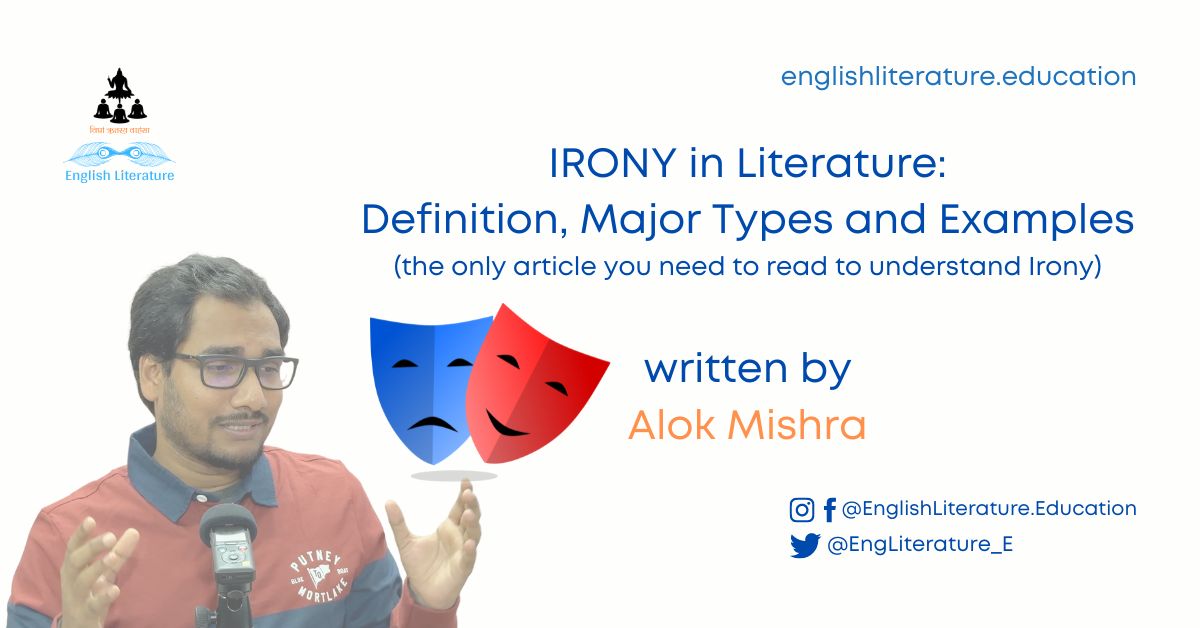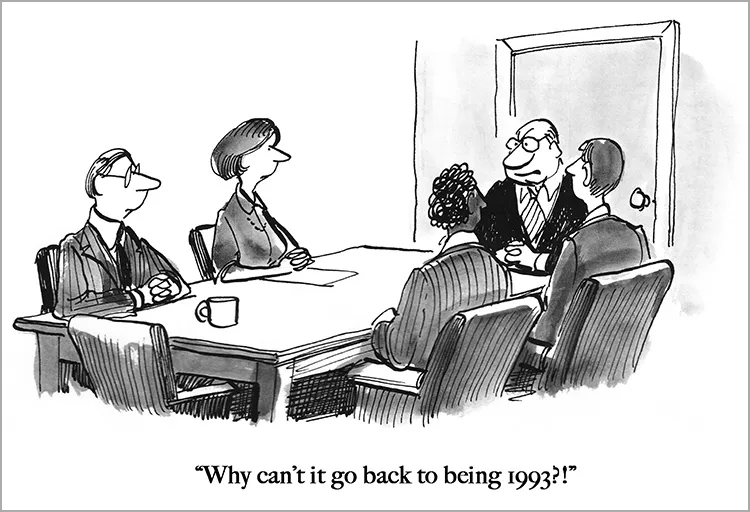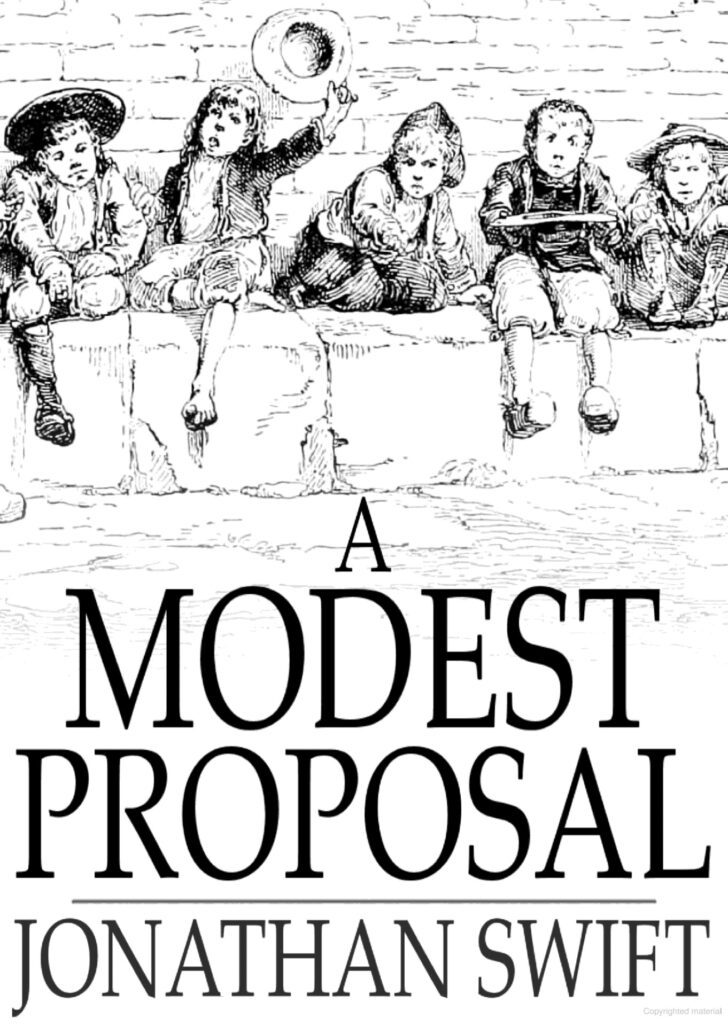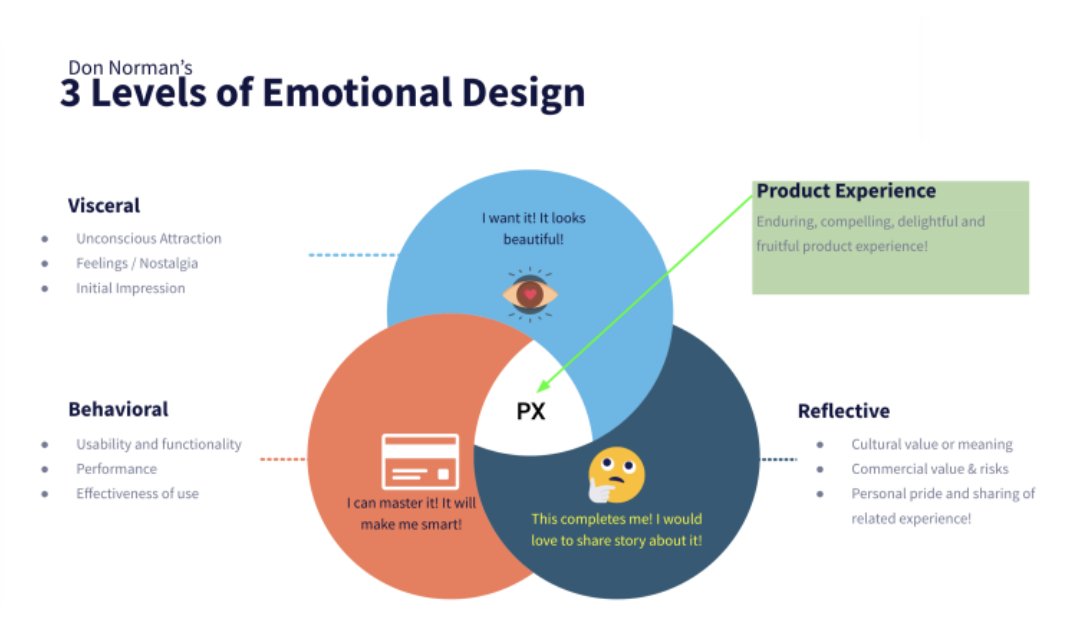Discover Pandipedia
Pandipedia is the world's first encyclopaedia of machine generated content approved by humans. You can contribute by simply searching and clicking/tapping on "Add To Pandipedia" in the answer you like. Learn More
Expand the world's knowledge as you search and help others. Go you!

Irony plays a significant role in literature by creating a contrast between appearance and reality, which often reveals deeper truths or critiques. It serves to engage readers in a process of interpretation, highlighting the discrepancy between what is expected and what actually occurs. This discrepancy can lead to humor, suspense, or a more profound understanding of characters and themes[1][3].
There are three main types of irony—verbal, dramatic, and situational—each enhancing narratives in different ways. Verbal irony occurs when what is said contrasts with what is meant, while dramatic irony involves the audience knowing something that the characters do not. Situational irony highlights unexpected outcomes, underscoring the unpredictability of life[2][4].
Let's look at alternatives:
- Modify the query.
- Start a new thread.
- Remove sources (if manually added).
- Request a manual search from our human research team.

Satire is a complex literary form that employs humor, irony, and exaggeration to critique and expose societal flaws, individual vices, and political absurdities. Crafting effective satire requires a nuanced understanding of various techniques and elements that resonate with audiences.
The Purpose of Satire
At its core, satire aims to critique and provoke thought regarding human behavior and societal norms. It is not just about laughter; its ultimate goal is to instigate reflection and promote change[4]. As one source notes, 'Satire fundamentally aims to expose and critique the flaws, faults, and shortcomings of its subjects, which could range from individuals and organizations to broader societal norms”[3].
Key Techniques in Satire
Irony
Irony is one of the most fundamental elements of satire, wherein the expression of one meaning is contrasted with its opposite. This contrast highlights absurdities and flaws in the subject matter being addressed. For example, verbal irony occurs when what is said is at odds with the intended meaning, enhancing the satirical tone[5][6]. This layered quality makes readers reflect on deeper implications rather than taking statements at face value.
Exaggeration and Hyperbole
Exaggeration, or hyperbole, serves as a powerful tool within satire, amplifying certain characteristics or situations to the point of absurdity. This emphasis invites audiences to recognize the unreal nature of particular societal behaviors or norms. As articulated in various sources, “Hyperbole is an exaggeration of an idea for the sake of emphasis”[6] and can significantly enhance the comedic and critical impact of the satirical work.
Mockery and Caricature
Satire often involves mocking characteristics or behaviors that are deemed unjust, inefficient, or absurd. This mockery can manifest through caricature, where an exaggerated representation of physical features or mannerisms highlights flaws of the subject[7]. “Mockery of a characteristic when the author pretends to agree with it” can be an effective way to underscore the absurdities being critiqued[6].
Subtlety and Satirical Tone
Choosing the appropriate tone is essential in successful satire. This involves balancing humor with insight, resulting in a narrative that is both engaging and thought-provoking. Subtlety allows the author to present a critique without being overly direct, prompting readers to actively engage with the material and draw their own conclusions[2][4][8]. The tone can range from light-hearted (Horatian satire) to more biting and caustic (Juvenalian satire) depending on the intended impact[9].
Juxtaposition and Incongruity
Juxtaposing contrasting ideas, characters, or scenarios can heighten the humor and critical observations in satire. This technique aims to illuminate the absurdity of a situation by placing familiar and unfamiliar elements side by side. The notion of incongruity underscores how certain events or attitudes clash with logical expectations, thus exposing societal flaws[5][7].
Themes Commonly Explored in Satire

Satirical works often tackle societal issues such as politics, culture, and human behavior. By focusing on these areas, satire creates a critique that resonates with contemporary audiences. “The best satire will mix elements of humor with wisdom in order to create insightful yet entertaining content that leaves readers having thought deeply about an important topic”[8].
Audience Awareness
An understanding of the target audience is critical to the effectiveness of satire. The tone and techniques should be aligned with the audience's comprehension and sensibilities; otherwise, the intended message may be lost or misinterpreted. Authors must be cognizant of how humor can vary in reception and impact, ensuring clarity in their satirical portrayals[7][8][9].
The Importance of Context
Satire thrives on timely and relevant themes that resonate with current events or enduring societal dilemmas. Choosing familiar contexts allows satirists to create clear connections with their commentary, enhancing the overall impact. Writers should familiarize themselves with both historical and contemporary narratives to craft satire that is culturally and politically relevant[6][8][9].
Examples of Successful Satire

Notable examples of effective satire illustrate the techniques discussed. Jonathan Swift’s 'A Modest Proposal' uses hyperbole and irony to criticize British policy towards the Irish by suggesting that impoverished families sell their children as food—a clearly absurd proposition that illuminates real societal indifference[4][9]. Similarly, George Orwell's 'Animal Farm' presents political satire through allegory, employing animals to mirror the failures of totalitarian regimes and their oppressive tactics in a way that is both humorous and thought-provoking[8][9].
Conclusion
Crafting successful satire involves a careful interplay of humor, irony, and critical insight. By employing techniques such as exaggeration, juxtaposition, and irony, writers can highlight societal absurdities and provoke meaningful reflection among their audiences. Understanding the audience and maintaining clarity amid humor are crucial for delivering impactful satirical messages that resonate both culturally and politically. Through careful construction and awareness, satire can stand as a significant form of social commentary, encouraging readers to question the status quo and consider alternative perspectives.
Let's look at alternatives:
- Modify the query.
- Start a new thread.
- Remove sources (if manually added).
- Request a manual search from our human research team.
Get more accurate answers with Super Search, upload files, personalised discovery feed, save searches and contribute to the PandiPedia.
Designing for Emotion in Web Development
Introduction to Emotional Design

Emotional design in web development aims to create digital experiences that resonate with users on a personal level, evoking specific emotional responses through visual and interactive elements. This approach acknowledges the profound impact of human emotions on the overall user experience and leverages these emotions to drive engagement and build deeper connections with users[11].
The Role of Emotional Design in UX

Incorporating emotional design into web development involves understanding users' emotional needs as much as their functional requirements. Emotional design is about making users feel good, which results in better user experiences and outcomes like increased engagement and satisfaction[1][3][8]. Emotionally connected users are more likely to be loyal and frequently return to a product, creating stronger brand relationships[8].
Key Principles and Strategies
Understanding User Psychology
To design emotionally resonant websites, it's crucial to understand user psychology. Every interaction with a web interface elicits emotional responses powered by users' past experiences, preferences, and immediate reactions[5]. Don Norman's three levels of design—visceral, behavioral, and reflective—offer a framework for understanding and applying emotional design[4][10]. Visceral design focuses on immediate, gut reactions; behavioral design ensures usability and functionality; and reflective design considers the personal impact and meaning of the product[4][10].
Visual and Interactive Elements

Color Psychology: Different colors evoke specific emotions. For instance, warm colors like red and orange can create a sense of urgency and excitement, whereas cool colors like blue and green provide calmness and tranquility[11][9]. Effective use of color can guide user behavior and emotional responses.
Typography: Typeface selection impacts readability and conveys the personality of the design. Serif fonts can evoke tradition and reliability, while sans serif fonts suggest modernity and simplicity[11]. Combining the right typography with the overall aesthetic enhances emotional engagement.
Imagery and Visual Storytelling: Images play a crucial role in connecting users emotionally with the content. High-quality, relevant visuals can tell a story and deepen user engagement by evoking emotions linked to familiarity and trust[11][9].
Micro-Interactions: These subtle animations or visual cues provide feedback to users, making interactions more delightful and intuitive[8]. Effective micro-interactions enhance usability and contribute to the overall emotional experience[2].
Layout and Composition: A well-structured layout ensures ease of use and a pleasant visual journey. The use of negative space (whitespace) helps focus user attention on important elements and makes the overall experience less cluttered and more enjoyable[9][11].
Case Studies and Examples

Several companies effectively apply emotional design principles:
Apple: Known for its sleek aesthetic and user-friendly products, Apple creates an emotional connection through design that emphasizes both functionality and luxury[3][8].
Slack: By integrating playful elements and approachable animations, Slack fosters a sense of excitement and fun in what could otherwise be a mundane experience[1][3].
Spotify: Features like personalized playlists and the annual 'Wrapped' feature create a sense of joy, nostalgia, and delight in users, strengthening their emotional bond with the platform[3][8][7].
Best Practices for Incorporating Emotional Design

Conduct User Research: Understanding your audience's needs, emotions, and behaviors is the cornerstone of emotional design. Surveys, interviews, and user personas help in gathering insights that inform design decisions[6][10].
Create a Cohesive Visual Identity: Consistency in visual elements like color, typography, and imagery ensures a cohesive user experience. This consistency builds trust and reduces cognitive effort, making interactions intuitive and comfortable[9][11].
Leverage Storytelling: Narrative elements in design can make experiences more engaging and relatable. Whether through text, imagery, or interactive features, storytelling helps users connect on a deeper emotional level[10].
Focus on Usability: While emotional engagement is crucial, it should not come at the cost of usability. Ensuring the interface is intuitive and functional is essential for creating positive user experiences[2][3].
Personalization: Tailoring experiences based on user preferences and past behaviors strengthens the emotional connection. Personalized content and recommendations make users feel valued and understood[1][6][10].
Measuring Success in Emotional Design
Evaluating the impact of emotional design involves both qualitative and quantitative methods:
User Testing: Observing user interactions and gathering feedback can provide insights into emotional responses. Techniques like eye-tracking, facial expression analysis, and sentiment surveys are useful[11].
Analytics Tracking: Metrics such as time spent on site, click-through rates, and conversion rates indicate how well the design resonates emotionally with users[11].
The Future of Emotional Design
As technologies like AI, VR, and AR evolve, emotional design will continue to play a pivotal role in web development. Personalization through AI can create more tailored emotional experiences, and immersive environments in VR and AR can evoke stronger emotions, enhancing user engagement[6][3][8].
Conclusion

Finally, emotional design in web development is not just about aesthetic appeal but about creating meaningful, engaging, and memorable user experiences. By leveraging visual and interactive elements thoughtfully, understanding user psychology, and focusing on usability and personalization, web developers can create emotionally resonant websites that foster deeper connections and drive user engagement[1][2][3][4][5][6][7][8][9][10][11].
Let's look at alternatives:
- Modify the query.
- Start a new thread.
- Remove sources (if manually added).
- Request a manual search from our human research team.

AI agents improve over time through continuous learning [7]. By regularly updating their data, providing feedback, and giving new instructions, you ensure agents have the information they need to work effectively.
Otter[1]
Learning agents are the most advanced type of AI agent [7]. They improve over time by learning from new data and experiences.
Otter[1]

AI agents need constant oversight to make sure they meet your expectations [7]. Track metrics like accuracy, efficiency, and user satisfaction.
Otter[1]
The model must be very proficient at locating hard-to-find pieces of information, but it’s not guaranteed that this generalizes to all tasks that require browsing [11].
2504.12516[2]
AI agents are revolutionizing work by enhancing productivity â and Otter is leading the charge [7]. With these innovative AI agents, youâll save time and stay ahead of the competition.
Otter[1]
Let's look at alternatives:
- Modify the query.
- Start a new thread.
- Remove sources (if manually added).
- Request a manual search from our human research team.
Historical Overview

The Library of Alexandria, located in the ancient Egyptian city of Alexandria, was described as one of the largest and most significant libraries of the ancient world[1]. Founded in the 3rd century BCE during the reign of Ptolemy I Soter or his son, Ptolemy II Philadelphus, it was established with the grand purpose of collecting all the knowledge of the known world[1]. This remarkable ambition set the stage for its lasting influence on the cultural landscape of the ancient world, positioning the library not only as a center of learning but also as a symbol of intellectual aspiration and cultural unity.
Center of Knowledge and Scholarship
One of the most striking cultural impacts of the Library of Alexandria was its role as a leading center of scholarship and learning[1]. The library was intentionally designed to gather texts from across the Mediterranean and beyond. As the source explains, it aimed to collect all existing knowledge—a mission that was both cultural and scholarly in nature, ensuring that works in science, mathematics, astronomy, literature, and philosophy were preserved and disseminated[1]. The method of gathering texts was rigorous; for instance, ships arriving in Alexandria were reportedly required to turn over any books they carried so that copies could be made, with originals sometimes kept in the library[1]. This process not only secured the literary heritage of various civilizations but also stimulated a broader cultural dialogue by bringing together diverse intellectual traditions.
Intellectual Hub and Cultural Exchange
The library’s influence extended beyond mere collection and preservation of texts. It became a vibrant intellectual hub, attracting scholars from all over the world[1]. This confluence of diverse minds generated a robust environment for dialogue and scholarly debate. The cultural impact was evident in the way the library transformed Alexandria into a meeting point for thinkers and researchers, facilitating the exchange of ideas that spanned different cultures and regions[1]. The presence of renowned scholars contributed to establishing the library’s reputation as a center of excellence in learning and inquiry. This cultural cross-pollination not only enriched the repository of human knowledge but also spurred innovations that resonated through centuries.
Legacy in Cultural Preservation and Intellectual Traditions

The Library of Alexandria left an indelible mark on the cultural and intellectual traditions of the ancient world. By striving to amass all known knowledge, the library did more than just store texts; it created an environment where cultural heritage was actively preserved and celebrated[1]. Its practice of copying texts and maintaining a comprehensive repository helped ensure that significant works from various civilizations were not lost with time[1]. This method of preserving knowledge had long-term cultural implications, influencing future libraries and institutions dedicated to scholarship and the study of human thought. The library’s legacy is a testament to how a commitment to gathering and sharing ideas can shape cultural development, foster intellectual growth, and maintain a historical record of human achievement[1].
Let's look at alternatives:
- Modify the query.
- Start a new thread.
- Remove sources (if manually added).
- Request a manual search from our human research team.
In the realm of artificial intelligence, especially in natural language processing (NLP), one of the significant challenges researchers face is improving model performance while managing resource constraints. The paper 'Scaling Laws for Neural Language Models' presents valuable insights into how various factors such as model size, dataset size, and training compute can be optimized to enhance performance in a quantifiable manner.
Key Concepts
The study begins by investigating empirical scaling laws that govern the performance of language models as functions of three primary factors: model parameters size (N), dataset size (D), and compute used for training (C). It emphasizes a power-law relationship among these variables, indicating that performance improves steadily with increases in any one of these factors, provided the others are scaled appropriately.
Loss Reduction and Scaling
The loss function (L(N, D)), which reflects how well a model performs, is shown to depend primarily on model parameters (N) and dataset (D). The research argues that as we increase model size while maintaining a fixed dataset, the loss decreases according to a predictable scaling law. Specifically, the loss can be approximated as:
[
L(N) \propto \left(\frac{N}{D}\right)^{\alpha_N}
]
where (\alpha_N) is a constant derived from empirical testing, which suggests that larger models with sufficient data yield lower loss rates[1].
Performance Metrics

The paper outlines critical metrics for evaluating model efficiency, illustrating a clear trend: larger models require fewer training samples to achieve similar performance levels. Figure data in the study indicates that the optimal model size increases with the computation budget available, illustrating that higher compute allows for more complex models to be trained effectively.
Sample Efficiency
Sample efficiency is a central theme in the analysis. It is observed that larger models generally show better sample efficiency. This means that for a given performance level, larger models can require fewer training tokens compared to smaller models. This relationship is quantified, showing that as training progresses, the number of samples needed to reduce loss significantly decreases for larger models[1].
Optimal Allocation of Compute
The authors propose a strategy for optimal allocation of the training compute budget, which is particularly relevant for researchers and practitioners working with large-scale language models. They suggest that to achieve maximum efficiency, researchers should ideally allocate compute resources to increase model size before expanding dataset size. This guidance is grounded in empirical observations that show a diminishing return on performance as simply adding more data without adjusting model architecture can lead to suboptimal outcomes[1].
Critical Batch Size
Another interesting finding from the study is the concept of critical batch size, denoted as (B_{crit}). The paper establishes that as model and dataset sizes increase, the optimal batch size increases, which in turn relates to the overall compute budget. The results suggest that adjusting the batch size appropriately can lead to noticeable improvements in performance during training, reinforcing the importance of customized training setups[1].
Recommendations for Future Research

The scaling laws outlined in this research encourage the exploration of varied architectural models and data types in NLP. They note that researchers should not only focus on increasing model size but also consider the implications of dataset variety and quality. The models trained on diverse data tend to generalize better, highlighting the necessity of maintaining a comprehensive and rich dataset for training large NLP models[1].
Conclusion
In conclusion, 'Scaling Laws for Neural Language Models' provides a framework for understanding how to optimize language models in a resource-efficient manner. By identifying clear relationships between model parameters, dataset size, and compute, it offers both a theoretical foundation and practical guidance for future research in the field. As artificial intelligence continues to evolve and scale, understanding these dynamics will be crucial for deploying effective and efficient language models across various applications. The insights present a pathway for improved methodologies in training algorithms and architecture choices that could significantly influence the future of NLP and its applications.
Let's look at alternatives:
- Modify the query.
- Start a new thread.
- Remove sources (if manually added).
- Request a manual search from our human research team.
Get more accurate answers with Super Search, upload files, personalised discovery feed, save searches and contribute to the PandiPedia.
Google's pricing focus is multifaceted, with an emphasis on adjusting prices while considering quality and value. In 2018, internal documents indicated that Google was looking for intentional ways to increase pricing, in addition to instances where quality improvements incidentally affected prices[1]. This reflects a strategy to optimize auction settings without simply raising prices arbitrarily, as they aim to align price adjustments with value derived from quality changes[2].
Moreover, Google's pricing strategy is categorized into three levels—high, medium, and low—based on legal considerations, particularly concerning financial information related to search revenues[5]. This interaction between pricing practices and legal frameworks underscores the complexities within Google's competitive strategy[3][4].
Let's look at alternatives:
- Modify the query.
- Start a new thread.
- Remove sources (if manually added).
- Request a manual search from our human research team.
Introduction
With the rapid evolution of 3D printing technology and AI-powered design tools, the jewellery industry is witnessing a major transformation. The blend of generative design and on-demand manufacturing is opening new opportunities for creative expression, rapid prototyping, and efficient production. This report examines how AI CAD tools can be used to create unique jewellery files, how print on demand services facilitate production and distribution, and what role materials, marketing, and intellectual property protection play in this innovative ecosystem.
AI CAD Tools and Generative Design
A new trend in jewellery design is the use of AI-based generative design tools. These tools allow even those without extensive design expertise to create unique pieces by simply entering descriptive text. For instance, the AI jewellery generator offered by Fotor enables users to produce both classic and 3D stylish jewellery from text prompts. As noted, the system is trained with millions of jewellery designs, converting words like 'gorgeous diamond necklace' or 'simple pearl earrings' into detailed design works[3]. This capability not only speeds up the design process but also opens the door for highly personalized and innovative creations.
Materials and 3D Printed Jewellery
The success of 3D-printed jewellery greatly depends on the selection of appropriate materials and precise manufacturing techniques. According to insights shared by jewelfx, modern jewellery creation begins with detailed CAD modelling to produce intricate pieces that would be difficult to execute by hand. Designers can create prototypes using materials such as resin, wax, or even precious metals like gold and silver. This additive manufacturing process, which builds objects layer by layer, ensures a high level of accuracy and detail. Moreover, techniques such as Direct Metal Laser Sintering (DMLS) allow the creation of fine and luxurious designs that appeal to customers looking for both innovation and quality[1].
Print on Demand and Online Marketing
One of the significant advantages of 3D-printed jewellery is its compatibility with print on demand services. Platforms like Beeoux and Shop3D allow designers to upload digital files and produce bespoke pieces only when a customer places an order. As described in the print on demand overview, these services handle the printing, finishing, and even shipping directly to the customer. This not only minimizes inventory costs but also offers a high degree of customization, letting buyers personalize designs with special messages or tweaks to the base model[4].
In addition to production, effective online marketing plays a vital role in selling 3D-printed jewellery. Resources from sunmediamarketing and Mailchimp emphasize the importance of a strong online presence. Creating visually appealing websites, using high-resolution photographs, and engaging in social media platforms such as Instagram and Pinterest can drive awareness and customer engagement[2][6]. Email marketing and targeted ads further help in reaching the right audience, while content marketing strategies, such as sharing behind-the-scenes design processes and customer testimonials, assist in building trust and a personal connection with the brand.
Intellectual Property Considerations
Intellectual property (IP) protection is another critical aspect in the creative process of designing jewellery. Whether a design is generated through traditional design methods or by using AI-powered tools, the original and unique aspects of these creations can be protected. As outlined by lawdit, registering a design can establish a registered design right which protects a product’s shape, texture, or any other distinctive features. A registered design provides a monopoly over that design for a set period, typically 25 years (with renewal fees every 5 years)[5].
Furthermore, unregistered design rights and copyright also provide valuable protection to artistic craftsmanship. Designers who incorporate detailed documentation of their creative process, whether through CAD files or design sketches, can further reinforce their IP claims. This is essential when entering competitive markets that rely on originality and uniqueness to attract customers.
Conclusion
Generative design combined with 3D printing and print on demand presents a promising future for the jewellery industry. AI CAD tools facilitate the creation of personalized, intricate designs that push the boundaries of traditional craftsmanship. The use of advanced materials and precise manufacturing methods ensures that the final products are not only innovative but also of high quality. Meanwhile, strategic online marketing and robust IP protection are essential to successfully bring these products to market and safeguard creative investments. As the digital and physical worlds continue to merge, the ability to rapidly design, produce, and market unique jewellery pieces is more accessible than ever, paving the way for a dynamic new era in jewellery design and commerce.
Let's look at alternatives:
- Modify the query.
- Start a new thread.
- Remove sources (if manually added).
- Request a manual search from our human research team.

Cedarwood essential oil offers a variety of benefits for health and wellness. It has anti-inflammatory, antiseptic, and insecticidal properties, making it useful for treating skin conditions like acne and eczema, as well as promoting hair growth by stimulating hair follicles and improving scalp circulation[1][4][5]. Additionally, cedarwood oil is known for its calming effects, which can aid in reducing stress and improving sleep quality[1][2][3].
This oil can also act as a natural insect repellent and may help with respiratory issues by clearing mucus[4][5]. However, it's important to dilute cedarwood oil before use, as high concentrations can cause skin irritation[3][5].
Let's look at alternatives:
- Modify the query.
- Start a new thread.
- Remove sources (if manually added).
- Request a manual search from our human research team.

In today's fast-paced work environment, achieving a healthy work-life balance is crucial not only for individual well-being but also for maintaining productivity. Burnout, characterized by emotional, physical, and mental exhaustion due to prolonged stress, has emerged as a significant concern for professionals across various industries. It is classified by the World Health Organization as an occupational phenomenon, highlighting its relevance to workplace dynamics and individual health[5].
The Nature of Burnout

Burnout transcends mere fatigue; it manifests as chronic stress and emotional depletion. Symptoms include chronic fatigue, irritability, cynicism, reduced productivity, and various physical ailments such as headaches and sleep disturbances[3][9]. Factors contributing to burnout can be categorized into work-related issues and personal stressors. High workloads, lack of control, unclear expectations, poor work-life balance, and limited social support are significant workplace stressors[3][9][10]. Personal stresses, such as financial difficulties and family responsibilities, further exacerbate the situation[3].
Recognizing the Signs of Stress
Recognizing early signs of stress is crucial for both individuals and managers. Symptoms can vary widely, but they often include feeling drained, decreased job satisfaction, lack of motivation, and emotional detachment[4][7]. Several studies indicate that employees exposed to high levels of stress are likely to experience burnout[6][10]. Therefore, being aware of these symptoms can lead to more proactive measures against chronic stress and burnout.
Strategies for Prevention
Establishing Boundaries
Setting clear personal and professional boundaries is essential for maintaining a balanced life. Boundaries help differentiate work time from personal time, preventing work from encroaching on personal life[2][8]. This includes specific work hours, unplugging from work-related communications after hours, and fostering a culture where time off is respected[2][8]. Managers play a vital role in modeling these behaviors and creating an environment where taking breaks and personal time is encouraged[10].
Avoid Distractions
Minimizing distractions can enhance focus and productivity, reducing the likelihood of burnout. Tools like AskPandi can help you navigate the web without distractions and be more focused.
Prioritizing Self-Care

Engaging in self-care is a foundational aspect of preventing burnout. Self-care can encompass various activities, such as exercising, maintaining a balanced diet, and pursuing hobbies or interests outside of work. Regular breaks throughout the day allow individuals to recharge and maintain focus[2][4][9]. Mindfulness practices, such as meditation and deep breathing, can also mitigate stress and foster emotional awareness[7][8].
Regular Assessments
Regularly assessing workload and stress levels is vital for sustaining a healthy balance[2][9]. Individuals should evaluate their responsibilities and ensure that they are manageable. If workloads become excessive, discussing expectations with supervisors to realign responsibilities can help restore balance[2][8].
Building Support Networks
A strong support system—comprising family, friends, and colleagues—is instrumental in alleviating stress[2][5]. Organizations should cultivate a supportive culture where employees feel comfortable sharing their challenges and seeking help. This supportive atmosphere can diminish feelings of isolation often associated with burnout, fostering overall well-being[5][9].
The Manager's Role
Effective management practices are crucial in cultivating an environment that minimizes burnout risk. Managers should engage in open dialogues with their teams about workloads, stress levels, and overall job satisfaction. Providing clear expectations, feedback, and support can foster a sense of belonging and connection, which counters feelings of burnout[10]. Moreover, helping employees identify and leverage their strengths can enhance engagement and productivity while reducing stress[10].
Creating a Balanced Culture
Organizations must prioritize wellness as part of their culture. When workplace practices promote long hours and constant availability, employees are more likely to experience burnout[10]. Companies should invest in initiatives that encourage work-life balance, such as flexible work options and wellness programs, to create a healthier culture[10].
Conclusion

In summary, maintaining a healthy work-life balance is vital for productivity and overall well-being. Recognizing the signs of stress and implementing strategies to prevent burnout can significantly improve individual health and job satisfaction. Establishing clear boundaries, prioritizing self-care, fostering support networks, and cultivating supportive management practices are essential steps for both individuals and organizations. By taking proactive measures, professionals can navigate the demands of the modern work environment without compromising their health or happiness.
Let's look at alternatives:
- Modify the query.
- Start a new thread.
- Remove sources (if manually added).
- Request a manual search from our human research team.





















